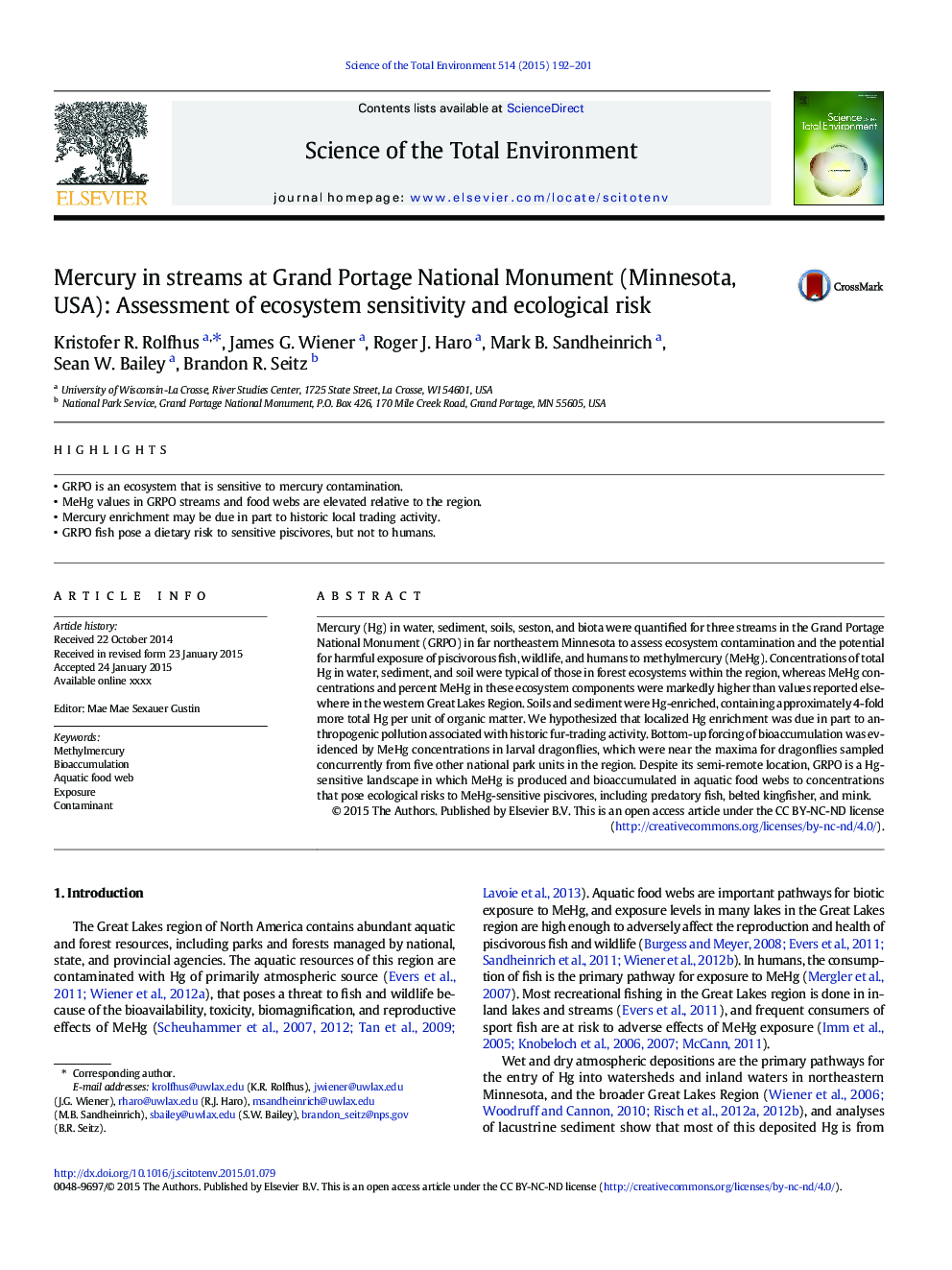| Article ID | Journal | Published Year | Pages | File Type |
|---|---|---|---|---|
| 6327036 | Science of The Total Environment | 2015 | 10 Pages |
Abstract
Mercury (Hg) in water, sediment, soils, seston, and biota were quantified for three streams in the Grand Portage National Monument (GRPO) in far northeastern Minnesota to assess ecosystem contamination and the potential for harmful exposure of piscivorous fish, wildlife, and humans to methylmercury (MeHg). Concentrations of total Hg in water, sediment, and soil were typical of those in forest ecosystems within the region, whereas MeHg concentrations and percent MeHg in these ecosystem components were markedly higher than values reported elsewhere in the western Great Lakes Region. Soils and sediment were Hg-enriched, containing approximately 4-fold more total Hg per unit of organic matter. We hypothesized that localized Hg enrichment was due in part to anthropogenic pollution associated with historic fur-trading activity. Bottom-up forcing of bioaccumulation was evidenced by MeHg concentrations in larval dragonflies, which were near the maxima for dragonflies sampled concurrently from five other national park units in the region. Despite its semi-remote location, GRPO is a Hg-sensitive landscape in which MeHg is produced and bioaccumulated in aquatic food webs to concentrations that pose ecological risks to MeHg-sensitive piscivores, including predatory fish, belted kingfisher, and mink.
Related Topics
Life Sciences
Environmental Science
Environmental Chemistry
Authors
Kristofer R. Rolfhus, James G. Wiener, Roger J. Haro, Mark B. Sandheinrich, Sean W. Bailey, Brandon R. Seitz,
